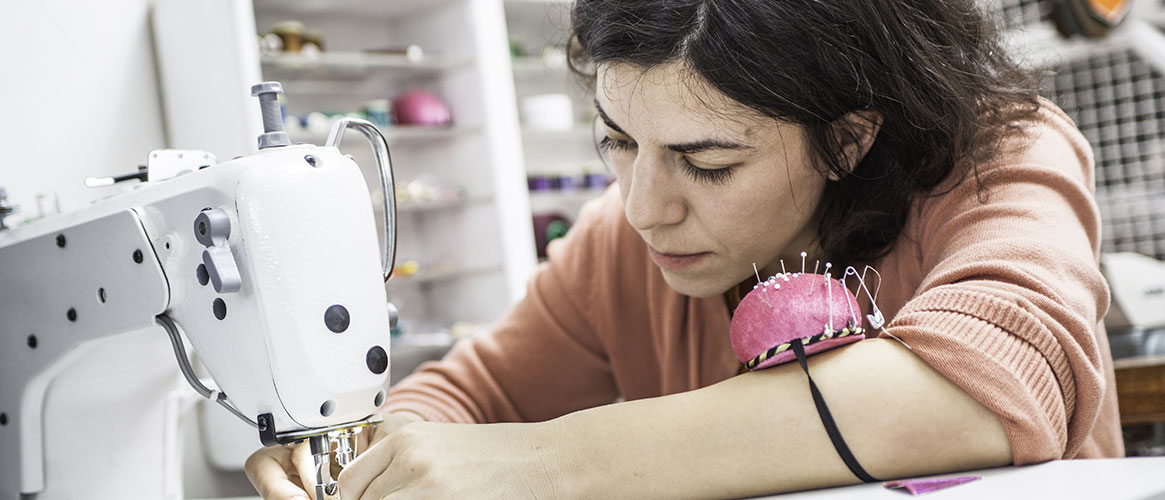Garment manufacturing, like other industrial processes, can be hazardous work. It’s important for employers and workers to be aware of the hazards associated with garment manufacturing and take precautions to guard against work-related illnesses and injuries.
There are many different types of machinery used in the garment industry. Some are used to knit and weave; sew or cut patterns and cloth; some press or steam; and others transport garment pieces on the factory floor. But before any work begins on a piece of machinery, the operator should be trained in its proper operation and all safety precautions to follow. Workers should be trained to know that any machinery with exposed moving parts should be properly guarded. And they need to understand how important it is that guards be kept in place to prevent accidental activation, pinch points, and amputation.
As cutting tools and knitting or sewing needles can pose cut and puncture hazards, workers should be instructed to follow basic safety precautions while working with sharp and cutting instruments. Precautions include: using sharp tools that are in good repair, carrying and storing sharp tools properly, and always cutting away from the eyes and body. Workers need to stay alert when working with sharp objects and make sure needles are properly guarded.
Chemicals also play a part in garment manufacturing. Dyes, enzymes, solvents, and other chemicals are used to create different fabric finishes and durability. So, proper ventilation, respiratory protection, and other personal protective equipment are important to protect workers during chemical processing. The same safety steps should be taken for workers who handle the finished material and may be exposed to excess chemicals and off-gassing. Workers should know where and how to access safety data sheets (SDS) on the chemicals used in their workplace.
Because much of garment work involves close viewing of the garment, eye protection is critical. Garment workers can avoid eye injuries by using proper shields on high-speed sewing machinery or safety glasses where appropriate. Also, adequate task lighting at individual workstations can prevent eyestrain.
Some garment manufacturing equipment can be very loud, so proper hearing protection may be necessary. Because a garment factory uses many heated processes, it is important for workers to avoid heat stress by labeling and guarding hot surfaces and drinking plenty of water during their shift. Proper ventilation can help to reduce ambient temperatures and ensure worker comfort.
Many tasks in garment manufacturing require repetitive motions. To prevent ergonomic injuries workers should be encouraged to rotate tasks or take frequent, short breaks to stretch and relax muscles. Workstations should allow enough space for the task, have appropriate working height, and provide proper seating. Manufacturing tools and machinery should incorporate ergonomic design principles and should not require an excessive amount of force to operate.
With proper training and instruction, machine guarding, personal protective equipment, and ergonomically designed work systems, garment workers can manufacture products in safe and healthy workplaces.
